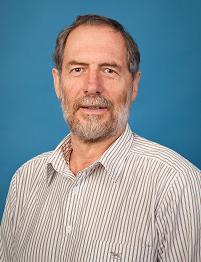
In English a car can circle a building but it can’t do any rectangling or pentangling; at least not without a switch to another language. But there are other languages says Associate Professor Bill Barton, Head of the Department of Mathematics at the University of Auckland where shapes do behave as verbs, and it is possible to speak of pentangling, and a rectangle is seen as something that rectangulates. One is the Navaho people of North America.,
If we imagine then, as Bill does, what sort of geometry might emerge from a language where shape is seen as an action, we are likely to concede that it could be quite different from the geometry we learned at school. The chances are it would be more dynamic, perhaps with the basic unit as a moving circle rather than a straight line.
If maths is a creative human activity rather than a set of finite rules waiting to be discovered, this has pedagogical implication. An important one in Bill’s view, is that “play” and exploration need to be more highly valued at all levels.
Play is encouraged at the elementary level of arithmetic in primary grades, then vanishes to be replaced throughout high school and through undergraduate studies with an unremitting focus on acquiring knowledge and skills. It emerges only at postgraduate level and beyond, where for mathematical researchers, it becomes the centre of the creative part of their work.
“Mathematics is a created world, a world of the imagination a kind of academic Middle earth,” says Bill. “Research mathematicians play with abstractions. They make things up. And then they manipulate things in their made-up world to see what happens. It’s much more creative than making up a game. Often they’re making up the playing field as well.”
“Mathematical thinking is about relationships between abstractions. Teachers aim to help learners manipulate abstract concepts. But what do we do when children have trouble with maths,” says Bill “we go back to the concrete.” A much more useful approach Bill believes would be to give learners more practice with the abstract, perhaps by drawing maps, or plans of houses, or playing games with sequences of numbers, to see what happens and find patterns but without any expectation of a “correct” result.
“Learners need to get used to numbers being things to play with, because that’s what mathematicians do.”
If we imagine then, as Bill does, what sort of geometry might emerge from a language where shape is seen as an action, we are likely to concede that it could be quite different from the geometry we learned at school. The chances are it would be more dynamic, perhaps with the basic unit as a moving circle rather than a straight line.
If maths is a creative human activity rather than a set of finite rules waiting to be discovered, this has pedagogical implication. An important one in Bill’s view, is that “play” and exploration need to be more highly valued at all levels.
Play is encouraged at the elementary level of arithmetic in primary grades, then vanishes to be replaced throughout high school and through undergraduate studies with an unremitting focus on acquiring knowledge and skills. It emerges only at postgraduate level and beyond, where for mathematical researchers, it becomes the centre of the creative part of their work.
“Mathematics is a created world, a world of the imagination a kind of academic Middle earth,” says Bill. “Research mathematicians play with abstractions. They make things up. And then they manipulate things in their made-up world to see what happens. It’s much more creative than making up a game. Often they’re making up the playing field as well.”
“Mathematical thinking is about relationships between abstractions. Teachers aim to help learners manipulate abstract concepts. But what do we do when children have trouble with maths,” says Bill “we go back to the concrete.” A much more useful approach Bill believes would be to give learners more practice with the abstract, perhaps by drawing maps, or plans of houses, or playing games with sequences of numbers, to see what happens and find patterns but without any expectation of a “correct” result.
“Learners need to get used to numbers being things to play with, because that’s what mathematicians do.”
(extracts from an article by Judy Wilford in "Ingenio et Labore: the University of Auckland Alumini Magazine")
1 comment:
Because I teach I feel as though I ought to understand this post - but embarrassingly, I find myself grappling with the concept. Put the kettle on, please, and I will come over and we can play with maths - perhaps counting coffee cups? This is a heavy duty post Alison. Remind me to bring it up when we meet next so that I can better understand ;-)
Post a Comment